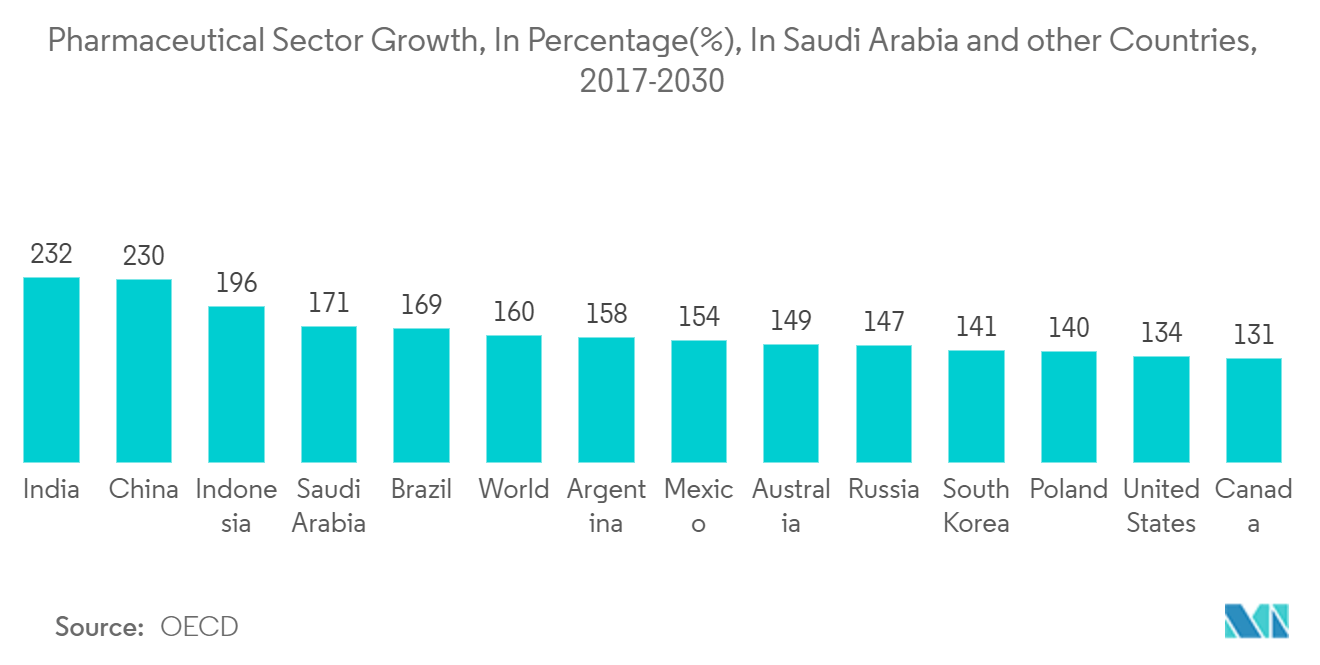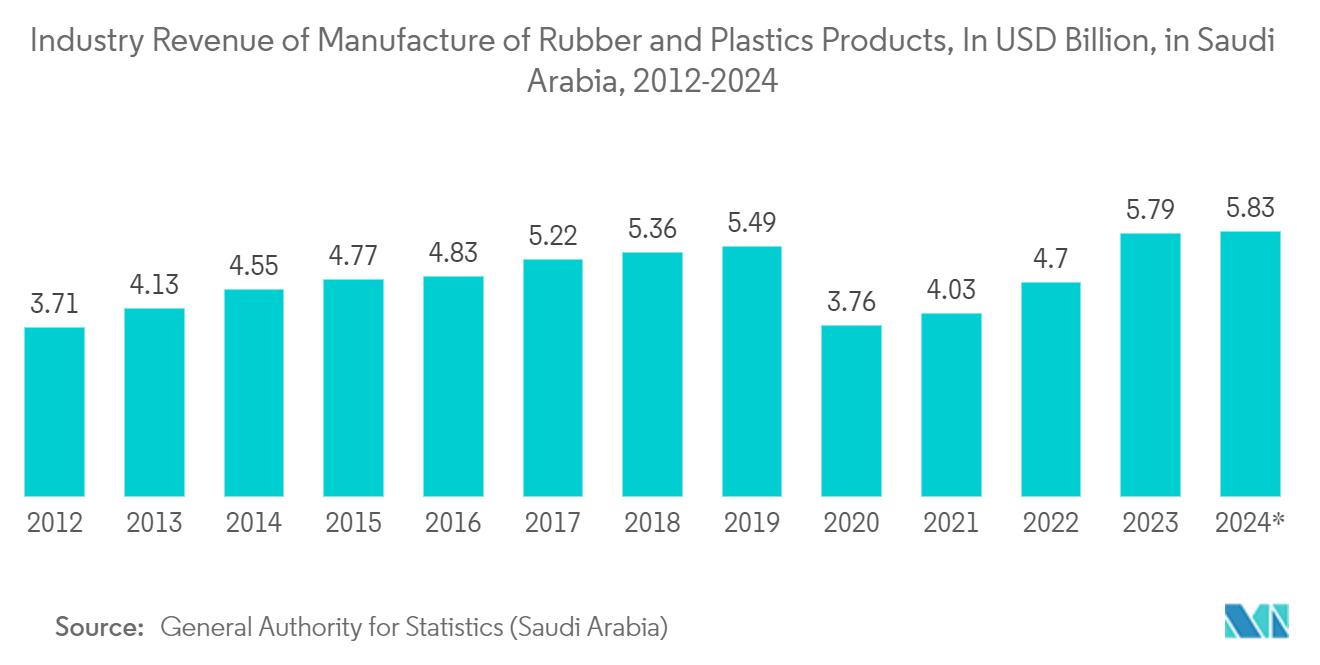Market Trends of Saudi Arabia Pharmaceutical Packaging Industry
Growing Health Concerns in the Country Drives Market Growth
- Growing health concerns and investments in the healthcare sector of Saudi Arabia are boosting the pharmaceutical packaging market. Saudi Arabia's government announced that it would invest USD 3.4 billion in the immunization and biomedical drugs industry. The move is part of the country's push toward achieving pharmaceutical security and making Saudi Arabia a more prominent hub.
- The opportunities would help achieve the country's pharmaceutical and health security goals and make Saudi Arabia an important center for this promising industry. Saudi Arabia is one of the most attractive markets in the Middle East for multinational corporations. Diversification plans in the country bode well for local and regional businesses, with 'Vision 2030' encouraging the expansion of manufacturing agreements. Multinational corporations are very interested. Key draws include the market's share size, demand sophistication, and favorable epidemiological trends. Given the need to meet the rising demand for established generic treatments, local players are also expected to find a fertile commercial base.
- Saudi Arabia has taken significant steps toward implementing its Vision 2030 healthcare reforms to enhance healthcare effectiveness and quality. Despite this, Saudi Arabia's pharmaceutical industry is unlikely to see significant changes due to challenges concerning patent approval for foreign drugmakers, a discriminatory procurement system, and flawed pricing policies.
- Saudi Arabia's Vision 2030 defined healthcare as one of its key pillars for development and set the goals and strategy for improved healthcare access and quality. Building a world-class infrastructure is crucial. The government turned to the private sector to achieve this with a USD 66 billion investment, making Saudi Arabia the most promising healthcare market in the Middle East.
- Saudi Arabia's Vision 2030 and National Transformation Plan would encourage the expansion of domestic pharmaceutical manufacturing in the country. This would reduce the reliance on imported generic medicines while providing opportunities for exports to neighboring import-reliant states.
- To expand the pharmaceutical industry in the country, the government is taking various initiatives, which have led to the high demand. The GCC countries also aim to develop domestic manufacturing capabilities to reduce import dependency. GCC regulations stipulate that producers in member states are not required to obtain registration or licenses to export to Saudi Arabia; regional producers are effectively given preferential treatment for entry into the Saudi market.

The Bottles Segment is Expected to Hold a Major Market Share
- The bottles segment accounts for a major share in terms of packaging type. This is due to the increased applications of plastics and glass in both solid and liquid oral medications, as bottles provide safety, convenience, and security.
- Glass containers are one of the primary packaging materials used in the pharmaceutical industry. The major reason for glass to hold the majority share in terms of adoption rate is that glass is an inorganic material made up of substances that prevent drug interactions. Increasing regulatory pressure and stringent standards for patient safety, coupled with the implementation of extra measures to reduce the risk of drug interaction, are also driving the market growth. Glass containers are classified into Type I, Type II, Type III, and Type IV glass, based on the degree of chemical/hydrolytic resistance to a water attack.
- Plastic bottle packaging is expected to witness significant growth because of its lightweight and easy-to-handle characteristics, making it easy to carry. Plastic bottle packaging does not break as easily as glass bottles. Plastics also have a greater aesthetic value and a barrier against moisture and air. These characteristics of plastic bottles are expected to boost the segment’s growth.
- Plastics are compatible with many formulations as well. Since plastic containers may be in direct contact with pharmaceutical formulations, they are usually made of materials that do not contain any substance that can alter the efficiency or stability of the formulation or present a risk of toxicity.
- However, the Saudi Standards, Metrology, and Quality Organization (SASO) announced new rules for plastic products in Saudi Arabia. The plastic needs to be OXO-biodegradable, and plastic products entering the country have to be mandatorily registered and approved by SASO for industrial or commercial use. Hence, different government regulations are expected to hinder the growth of plastic bottles in the country, further affecting the overall bottle packaging segment.


